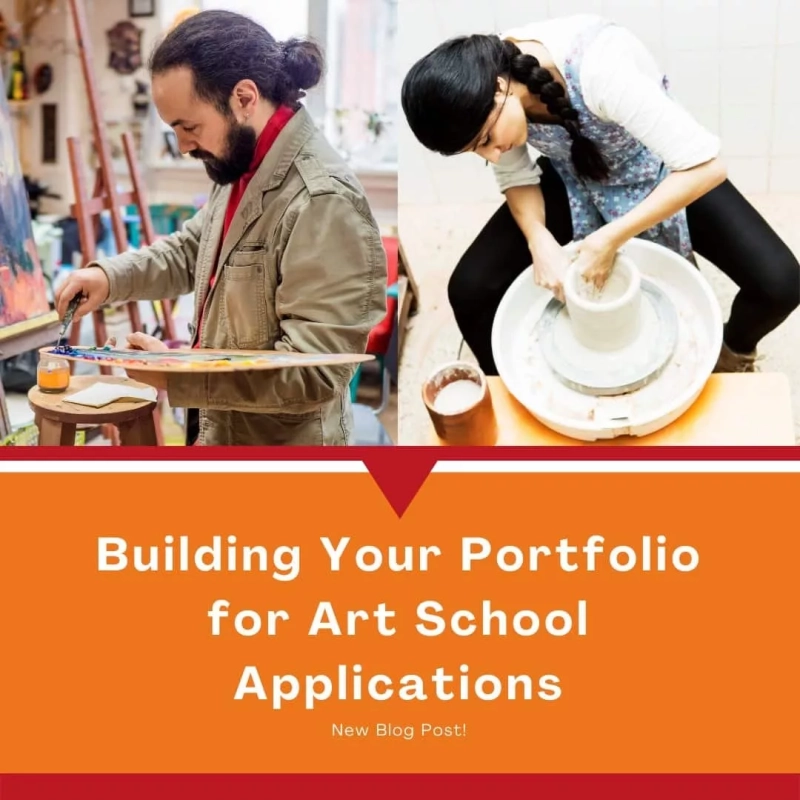If you’re a prospective art school applicant, you might already know about or even have your own art portfolio. After all, your portfolio is 90% of your application to schools, according to HLM educator and professional artist Gwen Hollingsworth. Gwen graduated from the UCLA School of Arts and Architecture in 2020 and now works professionally as a painter and art instructor in Los Angeles.
While UCLA was her chosen school, she is also familiar with the application process for the Art Center College of Design, Yale School of Art, Rhode Island School of Design (RISD), and California Institute of Arts. She can also help review art portfolios for high school programs such as LA County High School for the Arts.
We spoke with Gwen about the importance of your art portfolio, when you should have one compiled, how a professional review can prepare you to speak about your work, and what a portfolio review workshop might look like.
Q: What are the steps students must take to apply to art school?
- A: It depends on the school, but most include a portfolio, a personal statement, and an application. It’s important to make sure you have a strong body of work that is continuous and cohesive. You’ll also need a good statement describing your work and practice and why you want to attend the school you’re applying to.
Q: How important is it to have a developed and polished art portfolio?
- A: Your portfolio will be 90% of your consideration for art schools. Keep in mind though that while your portfolio is important, they’re also not expecting professional-level work. They really want to see that you have potential.
Q: What goes into developing and polishing an art portfolio?
- A: It depends a bit on the schools you’re applying to because different schools have different requirements. However, for every school, it’s important to show a story and progression in your portfolio. You want to make sure all pieces of work are tied in and connected. It’s also important to craft your technique and show you know what you’re doing and that you do it well.
Q: How can you specifically help students develop their art portfolios?
- A: I have a lot of experience talking about and critiquing artwork. I’ll ask students questions about why they’re making what they’re making. It’s important to be able to talk about your work. I also have experience with the application process and getting into a selective program. I know what schools are looking for and can help students meet those requirements. I can also help students refine and perfect their technical skills.
Q: How will students be better off after working with you on their art portfolios?
- A: They’ll have a more realistic understanding of the application process. I also want to make sure they aren’t making random pieces. Instead, they’ll have a body of work that’s more put together and ready for review by an academic committee.
Q: What kinds of students, in terms of level and subject area, can you help?
- A: I can help students of all levels and in different mediums, including painting, illustration, sculpture, ceramics, photography, and TV & Film Editing.
Read more about the Hodis Learning & Music Art Portfolio Workshop, which we’ll be offering soon! And learn more about Gwen or schedule a session with her today.

